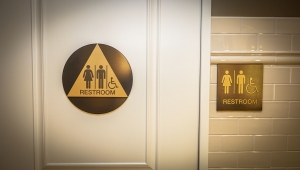
The bladder serves a specific function for the body, and when it doesn’t work properly, it can lead to urine leakage due to lack of sphincter control, also known as incontinence. On average, one-fourth of Americans today report suffering from urinary incontinence, and it affects both men and women. While many think that this problem only occurs in older women, it actually affects both men and women between the ages of 30 to 60, as well as those older than 60. Women in the younger age range report instances of incontinence more often, at 30 percent, while less than 5 percent of men in this age range report experiencing incontinence. Health factors such as obesity, smoking, diabetes, kidney disease, multiple pregnancies, or prostate problems can contribute to bladder leakage. There are many methods available to you to control or correct incontinence, but you may also be surprised to know that chiropractic care can alleviate the problem of incontinence.
Methods for Correcting Incontinence
To correct incontinence, some people can simply change certain behaviors in order to improve bladder function. For instance, monitoring and limiting how much you drink at one time can help control how full your bladder gets. Bladder training (or retraining) involves slowly increasing the amount of time between bathroom breaks in an effort to train your bladder to hold in your urine for longer periods. Kegel exercises to strengthen the pelvic muscles are also recommended. In more serious instances, medication might be prescribed to control bladder spasms. Surgeries, such as a sling procedure, are often recommended in extreme cases. However, chiropractic care is also a great option to treat urinary incontinence, so if you’re struggling with it, be sure to consult a Lithia Springs chiropractor for more information before agreeing to medication or surgery.
Chiropractic Care for Incontinence
Spinal health is an important key to overall health. Good spinal health promotes healthy body function. Pressure in the spinal cord can lead to many problems, such as lower back pain and incontinence. Bladder muscles are ultimately controlled by the central nervous system which works in conjunction with the spine, so a spinal adjustment can remove any nerve interference that is causing a miscommunication between your brain and urinary system. Subluxations in the lumbar or sacral spine are common in people with incontinence. Dr. Ronnie Bolar of Vital Life Chiropractic can align the spine properly through a chiropractic adjustment, restoring spinal alignment. This in turn relieves lower back pain, corrects subluxations, and allows the bladder to function properly. Through chiropractic care, many have seen positive results, including improved bladder control and completely eliminating incontinence.
Case Studies
In a case study involving 21 people from ages 13 to 90, chiropractic care improved bladder control in all instances with about half regaining complete control. Another study shows that 13 patients who received consistent chiropractic care for up to 8 weeks reduced nightly urination frequency from almost 4 times a night down to once a night. If you are suffering from incontinence and are looking for natural relief without medication or invasive procedures, contact Lithia Springs chiropractor Dr. Ronnie Bolar at Vital Life Chiropractic for more information.
Sources
Zhang, J., Haselden, P., Tepe, R. “A Case Series of Reduced Urinary Incontinence in Elderly Patients Following Chiropractic Manipulation.” Journal of Chiropractic Medicine, 2006; 5(3): 88-91. https://www.ncbi.nlm.nih.gov/pmc/articles/PMC2647065/pdf/main.pdf.
Cuthbert, S., Rosner, A. “Conservative Chiropractic Management of Urinary Incontinence Using Applied Kinesiology: A Retrospective Case-Series Report.” Journal of Chiropractic Medicine, 2012; 11: 49-57. https://www.ncbi.nlm.nih.gov/pmc/articles/PMC3315873/pdf/main.pdf.
